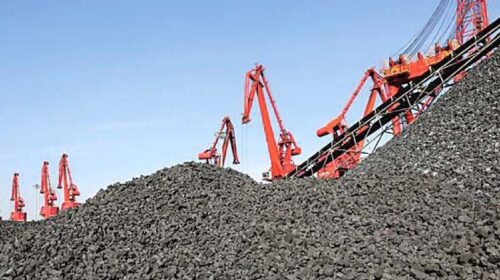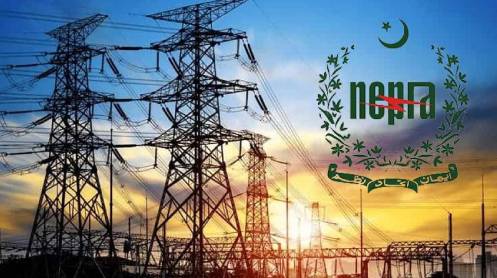China’s electricity sector has been undergoing a clean revolution over the past few years, primarily driven by exceptional growth in wind and solar power. However, rising wind and solar power create the need to reconfigure the electricity system to accommodate a changing generation mix while ensuring supply security. The main focus of the 14th Five-Year Energy Plan is to facilitate such a system-wide change, where coal will step down into a supporting role before its complete phaseout.
22 April 2022 – by Muyi Yang and Achmed Shahram Edianto
China’s 14th five-year energy plan (14th FYEP), covering the years 2021 to 2025, was officially released by the National Reform and Development Commission (NRDC) and the National Energy Administration (NEA) on March 22, 2022. It sets out a series of targets that will guide near-term actions towards attaining long-term climate commitments, most notably achieving carbon neutrality before 2060.
Key Targets of China’s 14th Five-Year Energy Plan
According to state media, the overarching target of the plan is to accelerate the development of a modern energy system that can provide clean, low-carbon and secure energy services efficiently. For this, a series of targets is set to guide the actions in five priority areas (see Table 1).
China’s electricity sector has been in the throes of a clean revolution over the past few years, primarily driven by exceptional growth in wind and solar power. In 2021, 34% of the world’s wind power was produced in China, and the corresponding figure for solar power is 32%, as estimated by Ember.
The inexorable march of wind and solar power in China is very likely to continue in the coming years as the country endeavours to bring its total wind and solar capacity to over 1,200 GW by 2030, rising from 635 GW at the end of 2021. This is a roughly 600 GW increase in wind and solar capacity in less than 10 years, which is approximately two times the current wind and solar capacity in Europe.
The rising wind and solar power create the need for a reconfiguration of the electricity system to accommodate a changing generation mix while maintaining supply reliability and security.
The electricity system comprises multiple elements, including technologies, infrastructure, market rules, regulatory frameworks, etc. These elements interact with each other in an array of complementary and interlocking relationships to ensure the system’s proper functioning. Making a change in one element of the system – a shift in the generation mix towards an increased reliance on renewable energy – will therefore require changes in other interconnected elements. If this is not done, a disconnect could emerge, undermining supply reliability and security.
When participating in the deliberation of the Inner Mongolia delegation during the Two Sessions this year, President Xi Jinping reasserted the need to “establish (new system) before breaking (old system)”, an order he had given last July. He also stressed that energy transition is a process that cannot be achieved overnight. He said, “We cannot throw away our means of living first, only to find that our new livelihood has yet to arrive,” a quote highlighted by the People’s Daily – the official newspaper of the Chinese Communist Party.
Role of Coal Power
Coal power is a key aspect of electricity system reconfiguration, and it will be demoted to a supporting role to facilitate wind and solar penetration before the complete phaseout of unabated coal generation.
During the Two Sessions in March this year, the National Energy Administration (NEA) – the national energy regulator – indicated that “in principle”, it will not permit the construction of new coal power projects exclusively for electricity generation. However, it also stressed the possibility of building “supportive units” of a “certain scale” to ensure supply sufficiency and provide flexible services to moderate various renewables generation.
The 14th FYEP also stipulates that coal power needs to play a supporting role in the electricity system and calls for efforts to expedite the transition of coal power away from electricity generation and towards the provision of flexibility and backup capacity to the grids before energy storage technologies (e.g. battery storage and hydrogen) become mature.
Coal power transition would lead to fewer operating hours of coal capacity and contribute to less coal generation. It would also provide a buffer for coal-related interests to better prepare themselves for a net-zero electricity future. Yet, attention should be given to prevent the coal power transition from being seized upon by coal-related interests, which may throw another lifeline to the coal industry.
—-
This article is co-written by Ember’s Dr. Muyi Yang and Asia Electricity Policy Analyst, Achmed Shahram Edianto.
Dr. Muyi Yang is Ember’s Senior Electricity Policy Analyst with a particular focus on promoting a coal-to-clean transition in the energy sectors of major Asian economies. Before joining Ember, he worked at the University of Technology Sydney for close to 10 years and was responsible for analysing policy issues related to the low-carbon energy transition. He has a bachelor’s degree in applied physics and master’s and doctoral degrees in energy economics and policy.
Achmed Shahram Edianto is a PhD Candidate at Tohoku University in Japan and Ember’s Electricity Policy Analyst for Southeast Asia.
About Ember
Ember is an independent, not-for-profit climate and energy think-tank that produces cutting-edge research and high impact, politically viable policies that aim to accelerate the global transition from coal to clean electricity.





